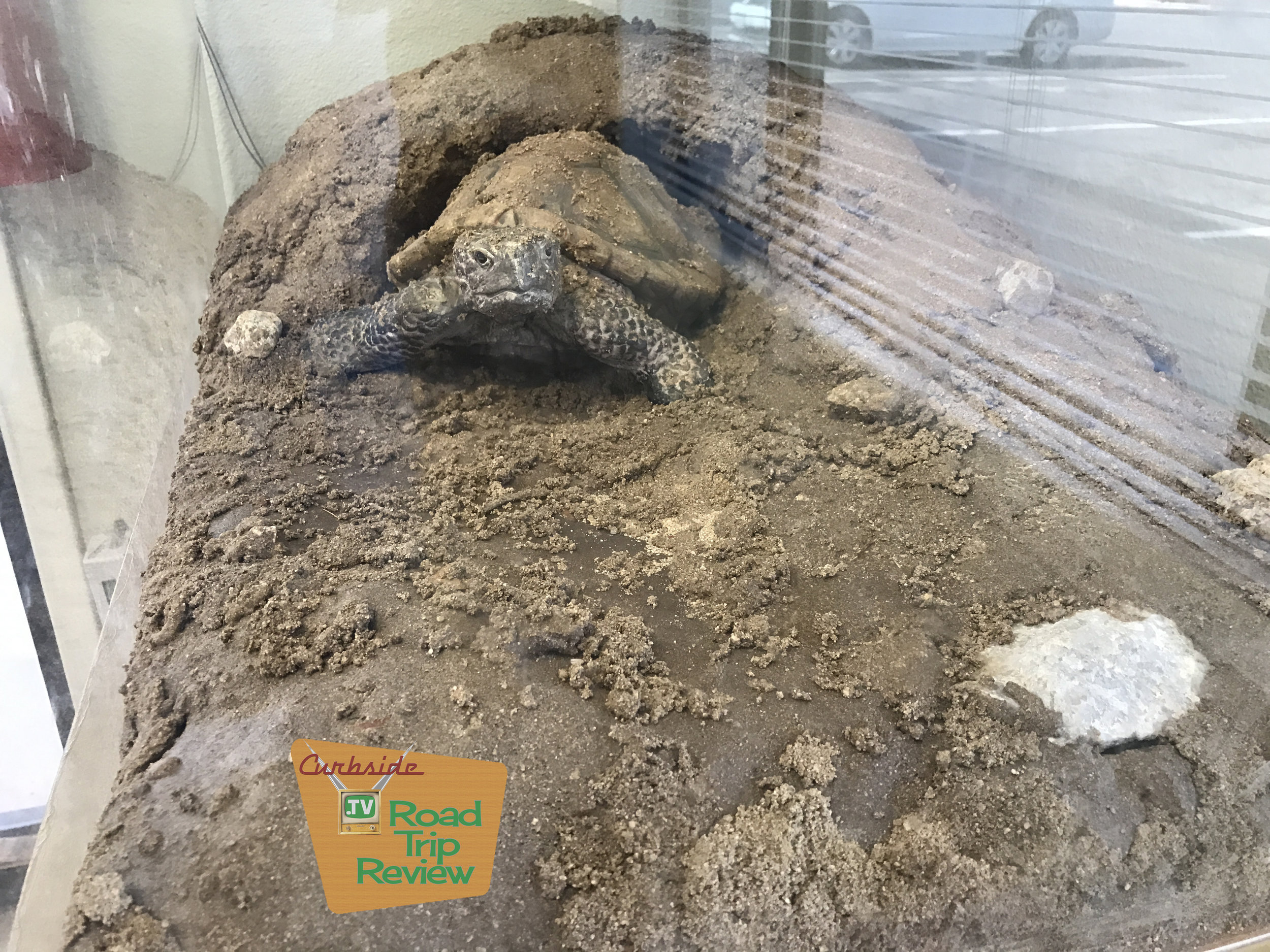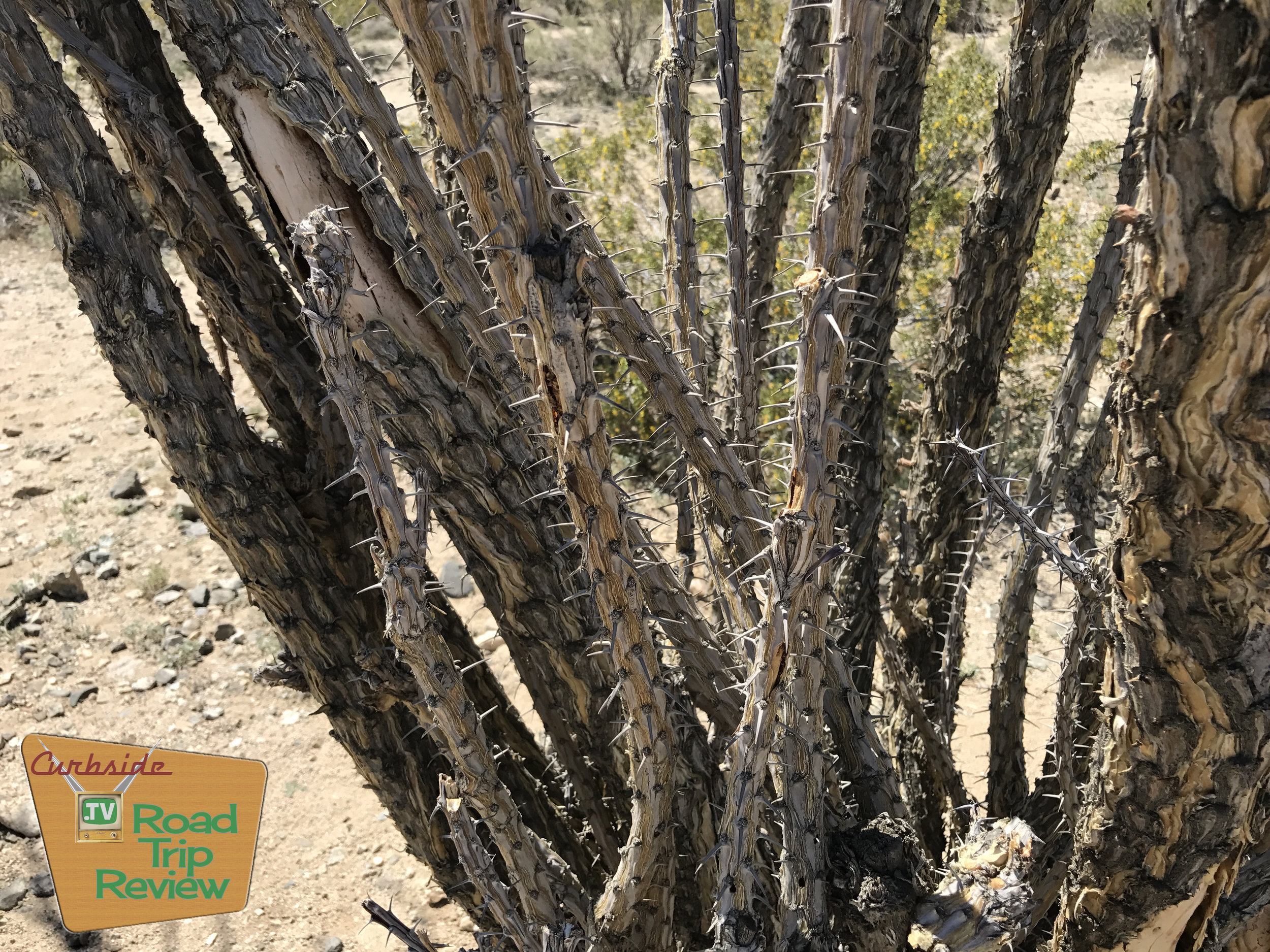California Desert Wildflower trip
With the incredible rainfall that California experienced, desert wildflowers exploded in a beautiful sea of color across the normally-arid desert resulting in visits to the desert by thousands of Californians, including us! We recently made a road trip to Joshua Tree State Park along with a bit of boon docking near Kramer Junction at Fremont Peak.
While it is assumed that the California desert is a vast wasteland of cactus and tortoises, it is actually a very alive ecosystem that has an uncanny ability to survive years of drought and then bounce back with fervor when conditions are right. Conditions have definitely been right and people are flocking to the desert to see this landscape come alive. Here’s what we saw.
Joshua Tree National Park
Named for the famous and unusual Joshua trees that dot the landscape, this 1,234 square mile region was bustling with activity not only by humans, but also by native residents of the land.
From Highway 10 we entered the southern portion of the park and stopped at the visitor center. This is a great place for a pit stop before you head into the park as there aren’t a lot of opportunities for the modest to have a relief break. This is also where you pay your $25 admission to the park and hit the road that meanders through the park.
As you traverse the park, there are a lot of places to just pull over and burn up your camera with shots of the unpopulated natural scenery. The road through the park is really good and the turnouts offer a safe place to stop and take a closer look at life in the desert.
For the more active visitors there are a number of hiking trails in Joshua Tree and, for the adventurous RVers, there are places to spend the night. This is not the place to bring your 45’ fifth wheel to be sure and several of the spots are limited to very small RVs. We saw one that was made of a former German fire truck - one of the more unique RVs I’ve ever seen.
Ocotillo grow tall and beautiful, with a striking orange flower.
One of the most interesting things about rolling through Joshua Tree is how different the landscape is with just slight gains in elevation. Travel a mile or so and the elevation gain is enough that the landscape changes from something like flowery shrubs to straight-out cacti. Another mile or so and the cacti are completely different. It’s very evident and really incredible.
One of the species of cactus that we saw were called cholla cactus. There are a number of signs that are very, very specific about the fact that these cacti’s needles can almost jump out at you and are very, very difficult and painful to remove. Unfortunately this warning wasn’t strong enough for some parents and we saw two children who were suffering from having experienced this pain first-hand, one of whom almost looked as if he had fallen on one of these.
Maybe that’s why they put up fences and signs.
Another favorite of mine was the Ocotillo which isn’t a cactus at all, but actually a woody plant. The Ocotillo grows and drops leaves based on rain, rather than season like most plants. In fact, the Ocotillo may have up to five growth rounds in a year of leaves.
What you don’t know when the Ocotillo has all the leaves in place is just how spiny and thorny the woody branches are. You might think that the Ocotillo’s leaves are enjoyable to touch, but you’ll only do it once. I love how the desert takes care of itself.
When you go to Joshua Tree make sure to plan a picnic lunch. Not only are there no services in the park, but there are also lots of places to just pull over and enjoy your picnic lunch. At the end of a short dirt road we found a great picnic spot shared by a few others that also had pit toilets and some nice rocks to crawl on. There was one climber making their way up a rather sheer rock and there is rock climbing for just about any skill set - or lack thereof.
While on the subject of rocks, one of the stony highlights was Skeleton Rock. This is one of those natural features that just had to be the easiest thing in the world to name. The main feature is a rock that looks just like a skull but there are also other rock formations within eyeshot that look like other things, including genitals. Of course this just could be my perverted vision speaking.
Of course the signature foliage in Joshua Tree are the trees for which the park is named. You actually have to go a ways into the park to see these trees but you’ll know them when you see them. They all come with a number of Bart Simpson haircuts and are home to a variety of life forms in the desert.
And there are a lot of creatures that call the desert home including desert tortoises. I had really, really wanted to see one of these and there’s a stuffed tortoise in the visitor’s center, but I had hoped to catch one in the wild. I figured this was just folly as these creatures are generally smart enough to avoid humans like the plague. However, sure enough, my wife’s sister spotted one on its way to the road and we stopped and took pictures of it.
If you ever encounter a desert tortoise know that they are a protected species. They’ve been on the planet for longer than we have and these slow-moving creatures can actually live out an entire century. However if they head for the highway, that life span can be cut quite short and that’s just where this fellow was headed.
Desert scientists tell you that if you encounter one of these and they’re headed for danger you can move them out of danger as long as you point them in the direction they were originally headed. Apparently they have a reason for going wherever they’re going so it’s not our job to tell them otherwise.
With the incredible bloom of the wildflowers making the news, the desert was very popular while we were there and news reports indicated that three desert tortoises had been lost already this season due to vehicular encounters. Not good. Apparently they will seek out the shade of your vehicle while you’re stopped and not everybody knows to look for them under the car when they head back out. This one that we had encountered was on his way to the road so we moved him, and a ranger came along and made sure he was safe.
Skull Rock in Joshua Tree National Park
Fremont Peak
After a day of traversing Joshua Tree we retired for the night and dragged the Waldsheißer to Fremont Peak Road north of Kramer Junction. While Joshua Tree has a great road and lots of places to pull over and enjoy the desert, Fremont has none of those things.
First of all, finding the road itself is a challenge. The entrance is off Highway 395 and is a dirt road, plain and simple. As you rumble your way across the desert testing the suspension and build quality of your vehicle, you are surrounded for as far as the eye can see by a lot of natural beauty but not a lot of people-made scenery.
Frankly, this is just what we wanted so, about a mile in, we encountered a circle of RVers who also had dune buggies and other off-road vehicles. After conferring with them, we continued along the rutted road in search of desert candles, one of my wife’s favorites.
A few more miles in the road became a bit more untraveled and we also came across the elusive desert candles to her great joy. Having hit our target, the day was getting late and we decided that a night of boon docking was in order so I proceeded to make a u-turn while she went out and photographed the flowers.
Here you can see for miles and the desert floor was literally carpeted with yellow, purple and green. The rain does some wonderful things to the desert and we were here to enjoy it. But first, the u-turn.
So without much adult supervision I backed the trailer over a berm several times to facilitate the u-turn. I think there are scenes in the Long, Long Trailer that are less humorous than what I was pulling off in this u-turn. Whoever works at Forest River in the design department should be proud of the fact that this trailer was pitched at crazy angles during this u-turn and didn’t flip over. Impressive. Well, and stupid on my part.
Heading back down the road we came from we found a nice, flat spot in the desert and backed the truck over another berm to set our campsite. The wind had also started to pick up so it was a good time to quit going and start chilling. That’s when I discovered that my silly u-turn took the life of one of the four stabilizer jacks on the trailer. Oh well.
In this part of the desert the only mobile life we saw were stink bugs and ants and not even a lot of those. If you haven’t yet, spend the night in the desert some time. It’s incredibly peaceful and quiet and there’s a certain magic about the environment that will relax every bone in your body. Oh, and don’t do this in winter or summer because you’ll either freeze or bake. Spring and fall are the times to go and I would suggest spring because of the blooms.
In the morning we woke to the sound of a crazy number of birds chirping from a thousand places where we couldn’t see them. Nature’s flying alarm clock created the perfect soundtrack for the beautiful flat lands carpeted with color as far as the eye could see.
If you haven’t spent time in the California desert at all, spring is the perfect time to do so. The days are moderate, the nights chilly and the ground has hardened enough that even a dork with a two-wheel-drive pickup can traverse the dirt roads without getting stuck at all. A night in the desert is a magical reset that you may truly enjoy so make your plans to visit this very special part of California soon.




















































































